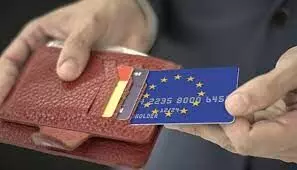Considering a Future in Schengen Nations? Here’s How EU Blue Card Can Work Wonders for You
While the European Union (EU) nations are heading forward to tighten migration rules for low-skilled workers, the ray of hope is widening for highly qualified professionals.
Considering a Future in Schengen Nations? Here’s How EU Blue Card Can Work Wonders for You

While the European Union (EU) nations are heading forward to tighten migration rules for low-skilled workers, the ray of hope is widening for highly qualified professionals. In 2023, the bloc issued nearly 89,037 EU Blue Cards, an increase of over four times since 2016. The growing demand for international talent was reported in sectors such as engineering, IT, research, and medicine.
What is an EU Blue Card and What Does it Offer?
The EU Blue Card is the European Union’s flagship work and residence permit that enables high-skilled workers outside of EU countries to live and work in an EU Member State. Introduced in 2009 and redefined in 2009, it expands to 25 out of 27 EU member states, except Denmark and Ireland. It’s considered equivalent to the U.S. Green Card.
Blue Card holders receive both work and residence rights in the issuing country. They may also travel across the other 25 EU nations for up to 90 days within any 180-day period. The initial stay period can range from one to four years, which differs from country to country, with most nations allowing extensions.
In most cases, permanent residency will be granted within one to two years. Moreover, job changes do not require the person to notify concerned authorities in most countries, making the process seamless for workers who are willing to switch employers.
Who is Eligible?
To qualify, applicants must…
1. Produce a university degree or equivalent qualification
2. Have a job offer or employment contract for at least one year
3. Meet the minimum salary threshold, which varies by country
4. Furnish proof of health insurance and valid travel documents
Employees are mandated to submit a declaration of employment and are sometimes required to undergo a labour market test, though not in all countries.
The applications can be submitted either within the EU (if the applicant already resides there) or via consulates and embassies abroad. It typically takes around 90 days to process, though timelines may vary from country to country.
Why do EU employers prefer the Blue Card?
The Blue Card acts as a protective shield for employers, enabling an effective hiring process to recruit non-EU professionals. This reduces the process-induced red tape, while ensuring compliance with local immigration rules. It also helps firms to address shortages in critical sectors like software development, healthcare, and engineering.

